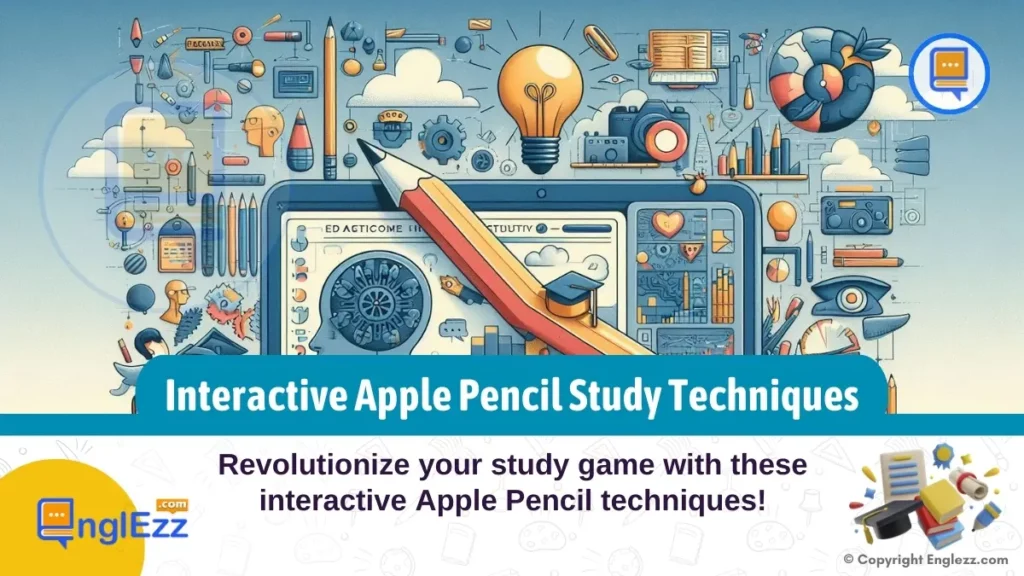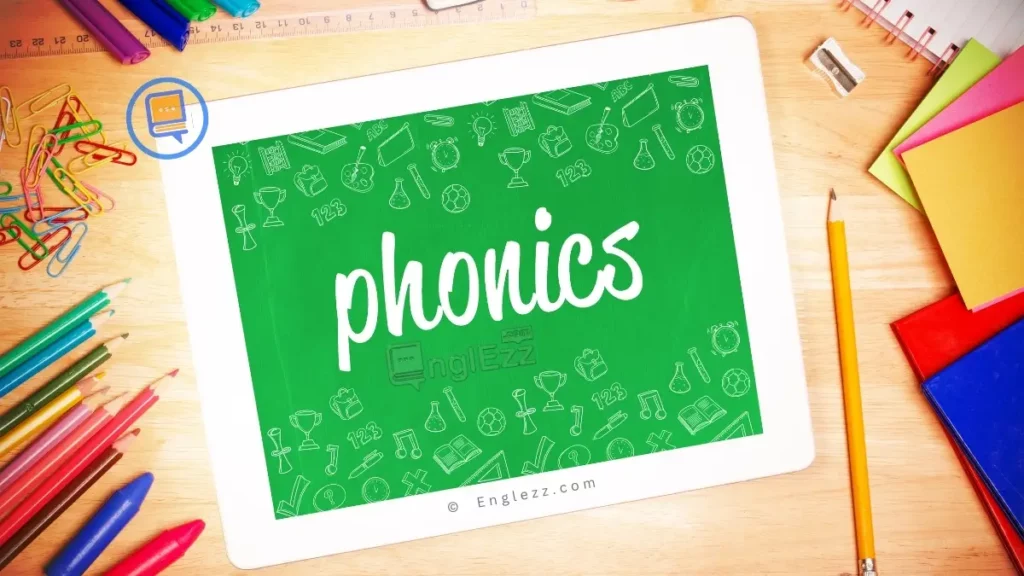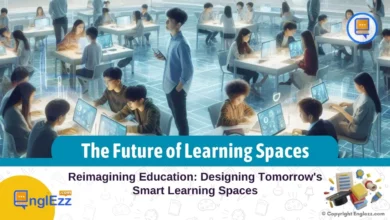Step into the future of learning where innovation meets education, and traditional study methods undergo a captivating transformation through the lens of technology. Imagine a world where your Apple Pencil becomes not just a tool but a gateway to interactive, immersive learning experiences that transcend the boundaries of conventional textbooks. This is the realm we delve into as we explore the dynamic realm of interactive study techniques with Apple Pencil.
Table of Contents
- The Future of Learning: Interactive Apple Pencil Study Techniques
- Annotating eBooks with Apple Pencil: Enhancing Study Engagement
- Creating Mind Maps for Better Visualization
- Creating Interactive Flashcards
- Engaging in Virtual Study Groups with Collaborative Whiteboard Tools
- Enhancing Note-Taking Efficiency with Smart Annotation Features
- Personalizing Study Strategies With Adaptive Learning Techniques
- Embracing the Future of Education with Apple Pencil
- Frequently Asked Questions About Interactive Study Techniques with Apple Pencil
- Q1: How can I get started with using an Apple Pencil for my studies?
- Q2: Are there specific apps recommended for creating mind maps or digital flashcards with an Apple Pencil?
- Q3: What are some benefits of collaborative whiteboard tools in virtual study groups facilitated by the Apple Pencil?
- Q4: Can smart annotation features really improve note-taking efficiency with Apple Pencil?
- Q5: How do adaptive learning techniques supported by Apple Pencil cater to diverse learning styles?
The Future of Learning: Interactive Apple Pencil Study Techniques
In the fast-evolving landscape of modern education, embracing technology isn’t merely an option; it’s a necessity that paves the way for enriched educational journeys. The fusion of cutting-edge devices like the Apple Pencil with pedagogical strategies opens up boundless possibilities for students, educators, and parents alike. As we embark on this enlightening journey together, prepare to unearth how advancements in tech can revolutionize the way knowledge is acquired, understood, and retained.

Join us as we unlock a treasure trove of insights, inspiration, and innovative practices that promise to redefine the very essence of learning in our digital age. With interactive study techniques at your fingertips, let’s embark on a transformative quest towards academic excellence and personal growth—a journey fueled by curiosity, empowered by technology, and illuminated by the limitless potential of tomorrow’s classrooms.
Annotating eBooks with Apple Pencil: Enhancing Study Engagement
In the digital age, where textbooks and reading materials have transitioned to eBooks, students find a new ally in their academic journey – Apple Pencil. By harnessing the power of this innovative tool, learners can delve deeper into their study materials through interactive annotations. Imagine being able to highlight key concepts, jot down personalized notes, or draw connections between ideas directly on your eBooks with the precision of a pencil. This level of interactivity not only keeps students engaged but also aids in better comprehension and retention of complex subjects.
Furthermore, the benefits of annotating eBooks using Apple Pencil extend beyond just marking up text. The act of actively engaging with the content by adding annotations has been shown to significantly improve understanding and memory recall.
Studies have suggested that when students interact with material by annotating it, they form stronger neural connections that aid in long-term retention. By personalizing their study materials with annotations tailored to their learning style, students can turn passive reading into an interactive learning experience that caters to their individual needs.
To make the most out of eBook annotation with Apple Pencil, students should develop effective strategies for marking up their digital texts. One tip is to color-code different types of annotations for easy reference—use one color for definitions, another for examples or case studies, and so forth. Another useful technique is to incorporate symbols or shapes alongside textual annotations to visually represent relationships between ideas. By adopting these organized approaches to eBook annotation, students can transform static texts into dynamic study resources that facilitate deeper learning and understanding across various subjects.
Creating Mind Maps for Better Visualization
Mind mapping is a powerful technique that transcends traditional note-taking, offering students a dynamic visual representation of their thoughts and ideas. With the Apple Pencil as a digital tool, this method becomes even more engaging and effective. By utilizing the Apple Pencil to create mind maps on an iPad or compatible device, students can visually organize complex information, making connections that enhance understanding and retention. Imagine color-coding different branches of knowledge or easily rearranging concepts with a simple drag-and-drop gesture – the possibilities are endless.
Just like any skill, utilizing the Apple Pencil for interactive studying requires practice. Make it a habit to integrate these techniques into your daily study routine to reap the full benefits. For instance, when creating mind maps or annotating eBooks, aim for consistency in incorporating visuals and notes that truly resonate with you. Over time, this practice will not only boost your retention but also refine your digital learning skills.
Furthermore, engaging in mind mapping activities with the Apple Pencil stimulates creativity and fosters critical thinking skills. Drawing connections between concepts, adding images or multimedia elements, and structuring information spatially can unlock new insights and perspectives on the study material. This interactive approach not only enhances cognitive abilities but also makes learning more enjoyable and immersive. Apps like Notability or GoodNotes provide versatile platforms for creating digital mind maps with the Apple Pencil, allowing students to unleash their creativity while organizing their thoughts effectively.
When it comes to boosting information recall, nothing beats the efficacy of visual aids like mind maps created with the Apple Pencil. The act of physically drawing out connections triggers multiple areas of the brain involved in memory encoding, leading to improved long-term retention. By incorporating colors, symbols, and diagrams into their mind maps using the Apple Pencil, learners tailor their study materials to suit their individual learning styles. This personalized approach not only reinforces comprehension but also transforms studying into an interactive and personalized experience tailored to each student’s preferences.
In essence, by embracing the practice of creating mind maps with the Apple Pencil, students embark on a journey towards deeper understanding and mastery of academic content. The marriage of innovative technology with proven cognitive strategies opens doors to new realms of learning possibilities where creativity thrives alongside knowledge acquisition. Through visualization aided by interactive tools like the Apple Pencil, students can turn abstract concepts into tangible representations that stimulate active engagement with course materials – ultimately leading to enhanced academic performance and a newfound appreciation for the art of studying.
Creating Interactive Flashcards
Flashcards have long been a staple study tool for students seeking to reinforce their learning through active recall, but with the technological advancement brought by the Apple Pencil, these traditional flashcards are getting a modern makeover. By harnessing the interactive capabilities of the Apple Pencil, learners can now engage with digital flashcards in ways that transcend mere rote memorization. Imagine flipping through virtual cards on your iPad, tapping into audio clips for pronunciation practice or viewing detailed visuals to aid in understanding complex concepts – this is the new face of flashcard learning.
One of the key advantages of using Apple Pencil for interactive flashcards is its ability to boost memory retention and self-assessment. Incorporating multimedia elements like images and audio prompts not only makes studying more engaging but also taps into multiple sensory channels, enhancing information processing and recall. For instance, medical students can create digital flashcards with labeled anatomical diagrams that they can interactively dissect on-screen using the Apple Pencil, reinforcing their knowledge in a dynamic and memorable way.
Furthermore, the flexibility offered by digital flashcards allows for adaptive learning experiences tailored to individual preferences and needs. Students can customize their study materials by adding interactive elements such as quiz buttons that reveal answers upon touch or incorporating color-coded cues for better categorization.
By actively involving users in the creation and manipulation of digital flashcards, the Apple Pencil transforms passive studying into an immersive and effective learning journey that adapts to each learner’s unique pace and style. In this way, traditional flashcards see a vibrant evolution towards personalized and engaging study tools fit for the 21st-century learner.
Engaging in Virtual Study Groups with Collaborative Whiteboard Tools
In the age of digital learning, the Apple Pencil introduces a new dimension to virtual study groups by enabling students to engage in collaborative sessions with interactive whiteboard tools. Imagine a scenario where students from different corners of the world come together virtually, armed with their Apple Pencils and a shared digital whiteboard.
This setup not only fosters teamwork but also promotes real-time collaboration where ideas flow freely, discussions are enriched, and insights are collectively built upon. The Apple Pencil’s precision allows for detailed annotations and drawings that enhance the visual learning experience during these virtual study group sessions.
Moreover, the benefits of using collaborative whiteboard tools extend beyond just sharing notes. Students can actively participate in problem-solving exercises, brainstorming sessions, or concept mapping activities. Through peer feedback and idea sharing facilitated by the Apple Pencil, individuals gain diverse perspectives and refine their understanding of complex topics. This interactive approach encourages active engagement with study material and enhances critical thinking skills through dynamic group interactions.
To make the most out of virtual study groups with the Apple Pencil, exploring platforms like Google Jamboard or Microsoft Whiteboard can provide a seamless collaborative environment. These tools offer features such as real-time editing, color-coded annotations, and multi-device synchronization, making group work efficient and productive. By leveraging the capabilities of collaborative whiteboard tools paired with the versatility of the Apple Pencil, students can transform their remote study sessions into engaging and fruitful learning experiences that transcend geographical boundaries.
Enhancing Note-Taking Efficiency with Smart Annotation Features
In the realm of digital note-taking, the Apple Pencil proves to be a game-changer when it comes to enhancing efficiency and organization. With its smart annotation features, students can effortlessly streamline their note-taking processes. Imagine annotating lecture slides directly on your iPad, underlining key points, jotting down additional insights, or sketching visual aids – all seamlessly integrated with your digital notes. This level of interactivity not only saves time but also allows for a more dynamic engagement with the study material.
While individual study methods are valuable, don’t underestimate the power of collaborative learning with peers. Utilize tools that allow for real-time interaction, such as collaborative whiteboard apps, to engage in virtual study groups where ideas can be shared and discussed using Apple Pencil functionalities. Seeking feedback from classmates or educators on your interactive study materials can provide diverse perspectives and enrich your learning experience.
Transitioning from traditional paper notes to digital annotations brings forth a myriad of advantages. Digital notes offer unparalleled organization capabilities, enabling students to categorize, search, and access their notes with ease. The ability to annotate PDFs and documents directly on the screen allows for quick reference and ensures that no important information gets lost in the midst of countless pages. Moreover, the accessibility of these digital annotations across various devices ensures that students can study anytime, anywhere without lugging around heavy textbooks or stacks of paper.
To make the most out of smart annotation tools provided by Apple Pencil devices, students can leverage features like highlighting, drawing shapes for emphasis, adding comments or explanations within text, and even creating interactive diagrams on-the-go. By mastering these tools effectively, students can boost their productivity levels during study sessions and enhance their overall study effectiveness. The adaptability and versatility of smart annotation features empower learners to tailor their note-taking methods according to their unique learning preferences while harnessing technology for an optimized educational experience.
Personalizing Study Strategies With Adaptive Learning Techniques
In the realm of education, one size does not fit all. Recognizing the unique learning styles and preferences of students is crucial for fostering effective learning experiences. By harnessing the capabilities of the Apple Pencil, learners can personalize their study strategies to align with their individual needs. Whether visual learners prefer creating colorful mind maps or auditory learners benefit from interactive flashcards with audio cues, the Apple Pencil offers a versatile tool to cater to diverse learning preferences.

Adaptive learning techniques empower students to take control of their educational journey. For instance, utilizing apps that adapt content difficulty based on performance can challenge high-achieving students while providing additional support to those who may need it. By integrating adaptive learning tools into their study routines, students can receive personalized feedback and targeted resources that enhance comprehension and retention.
Encouraging experimentation with various interactive study techniques facilitated by the Apple Pencil fosters a dynamic approach to learning. Students are encouraged to explore new methods such as digital flashcard creation or collaborative whiteboarding sessions to discover what resonates best with their learning style. Embracing this adaptability not only enriches the educational experience but also empowers students to take ownership of how they engage with and retain information, ultimately leading to more profound learning outcomes.
One of the greatest advantages of digital studying with Apple Pencil is its adaptability to cater to individual preferences and learning styles. Experiment with different interactive study techniques like active recall flashcards or smart annotation features to identify what works best for you. Tailor your approach based on how you absorb information effectively—whether through visual cues, auditory prompts, or kinesthetic activities—to optimize your study sessions and make learning more personalized and engaging.
Embracing the Future of Education with Apple Pencil
As we wrap up our exploration into the realm of interactive study techniques with Apple Pencil, it becomes evident that the future of learning is truly at our fingertips. By harnessing the power of technology in education, students, educators, and parents alike can revolutionize traditional study methods, paving the way for more engaging, effective, and personalized learning experiences. The eight interactive Apple Pencil study techniques we’ve delved into serve as a testament to the endless possibilities when creativity intersects with innovation in the educational landscape.
Empowering students to take charge of their academic journey through tools like eBook annotation, mind mapping, digital flashcards, collaborative whiteboard sessions, smart annotation features, and adaptive learning techniques not only enhances knowledge retention but also fosters a deeper connection with learning materials.
As we embrace these dynamic approaches to studying enabled by Apple Pencil, we embark on a journey towards a more inclusive, inspiring, and impactful educational future where every learner can flourish. Let’s seize this opportunity to reimagine learning for generations to come.
Frequently Asked Questions About Interactive Study Techniques with Apple Pencil
Q1: How can I get started with using an Apple Pencil for my studies?
A: To begin utilizing an Apple Pencil for your studies, ensure compatibility with your iPad model and explore applications tailored for note-taking and interactive study activities.
Q2: Are there specific apps recommended for creating mind maps or digital flashcards with an Apple Pencil?
A: Yes! Apps like Notability and GoodNotes offer robust features for visual brainstorming through mind maps and creating interactive digital flashcards seamlessly.
Q3: What are some benefits of collaborative whiteboard tools in virtual study groups facilitated by the Apple Pencil?
A: Collaborative whiteboard tools encourage real-time idea sharing and peer feedback within study groups while enhancing engagement through interactive sessions.
Q4: Can smart annotation features really improve note-taking efficiency with Apple Pencil?
A: Absolutely! Smart annotation tools streamline note-taking processes by enabling easy organization, searchability, and accessibility of digital notes effectively.
Q5: How do adaptive learning techniques supported by Apple Pencil cater to diverse learning styles?
A: Adaptive learning methods leverage technology to personalize study strategies based on individual preferences and needs, providing versatile support for various learning styles.









Explore the future of learning with Interactive Apple Pencil Study Techniques. Dive into an interactive and engaging study session today!
Discover Interactive Apple Pencil Study Techniques for the future of learning. Enhance your study sessions with innovative tools!